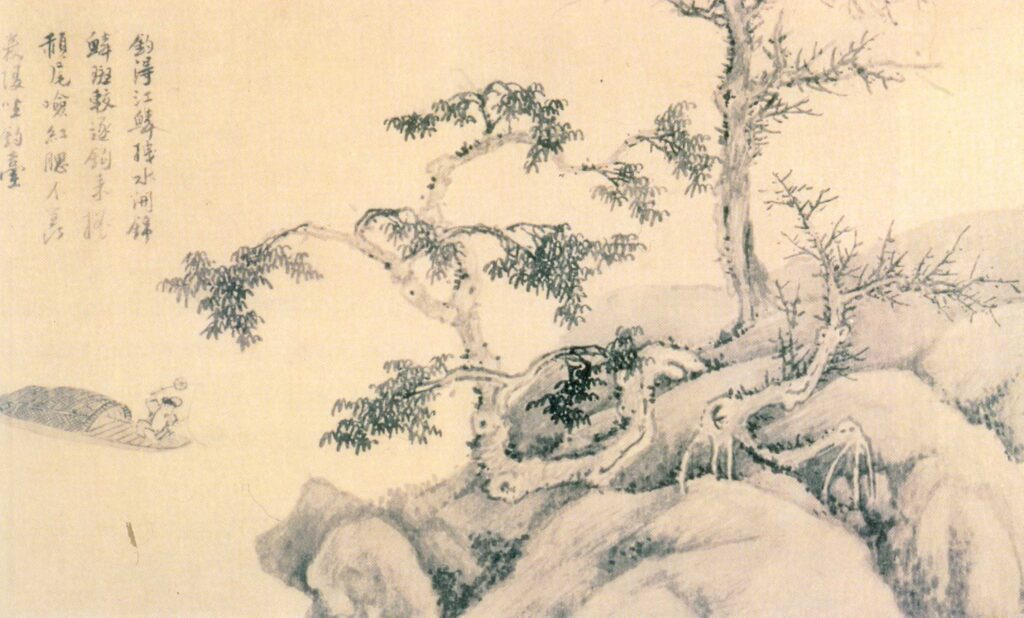Exploring Yimusanfendi: A Journey into Traditional Chinese Art and Philosophy

Introduction
Yimusanfendi is an ancient and revered cultural practice deeply rooted in traditional Chinese art and philosophy. With a rich history spanning over centuries, Yimusanfendi has played a pivotal role in shaping Chinese aesthetics, spirituality, and the way of life. In this article, we will delve into the essence of Yimusanfendi, examining its origins, principles, and enduring significance in contemporary China.
Origins and Meaning
Yimusanfendi, often referred to as “Yimu,” encompasses a diverse range of practices, including painting, calligraphy, poetry, and music. The term itself carries profound meaning. “Yimu” translates to “ink” or “inkstone,” symbolizing the fundamental medium used in traditional Chinese art. “Sanfendi” means “the path of the three perfections” – painting, calligraphy, and poetry – which are considered the pinnacle of artistic expression.
The origins of Yimusanfendi can be traced back to ancient China, where it emerged as a way for scholars, poets, and artists to communicate their thoughts, emotions, and spiritual insights. Combining the mastery of brushwork, ink, and paper, Yimusanfendi became a conduit for capturing the essence of nature and conveying the artist’s inner world.
Principles and Techniques
Yimusanfendi embodies several principles and techniques that guide artists in their creative process. These principles emphasize the harmony between the artist and nature, as well as the interplay between spontaneity and control. Some fundamental aspects of Yimusanfendi include:
- Qi (Vital Energy): Artists believe that the flow of qi, or vital energy, is essential in their artistic practice. By harmonizing their energy with that of the subject matter, they strive to capture its true essence.
- Wuwei (Non-Action): Yimusanfendi encourages artists to embrace a state of wuwei, where the mind is free from distractions and the brush flows effortlessly. It is through non-action that artists achieve a natural and unforced expression.
- Xieyi (Freehand): The technique of xieyi allows for expressive brushwork and the suggestion of forms rather than a meticulous representation. It emphasizes the artist’s interpretation and inner emotions.
- Shanshui (Mountain and Water): Shanshui painting is a prominent genre within Yimusanfendi, focusing on landscapes that encapsulate the harmony between mountains, water, and the surrounding elements. These paintings often embody a sense of tranquility and evoke contemplation.
Spiritual and Philosophical Significance
Yimusanfendi is deeply intertwined with Chinese philosophy, particularly Taoism and Confucianism. Through the practice of Yimusanfendi, artists seek to transcend the mundane and connect with the spiritual realm. The act of painting, calligraphy, or composing poetry becomes a form of meditation, allowing the artist to cultivate inner peace, harmony, and self-awareness.
Furthermore, Yimusanfendi reflects Confucian values of self-cultivation, moral character, and reverence for tradition. It encourages artists to engage with classical texts, study the works of past masters, and continually refine their skills. The pursuit of Yimusanfendi is seen as a lifelong journey towards personal growth and wisdom.
Contemporary Influence and Preservation
Despite the rapid modernization of China, Yimusanfendi continues to hold great cultural and artistic significance in contemporary society. It serves as a source of inspiration for artists, a way to reconnect with traditional Chinese values, and a means to express their individuality while honoring the
Introduction: In a world teeming with diverse cultures, histories, and belief systems, Yimusanfendi stands out as a captivating enigma. This article delves into the depths of Yimusanfendi, exploring its origins, significance, and the lingering mysteries that surround it. From its ancient roots to its present-day manifestations, we embark on a journey to understand this intriguing phenomenon.
- The Origins of Yimusanfendi: Yimusanfendi traces its roots back to the ancient civilizations of the Far East. The term itself is a fusion of words from Chinese and Japanese languages, translating to “the way of hidden wisdom.” It emerged as a philosophical and spiritual concept, encompassing the pursuit of inner harmony, balance, and enlightenment. Scholars believe that Yimusanfendi was developed by ancient sages who sought to unravel the mysteries of existence and human nature.
- Core Principles and Teachings: At its core, Yimusanfendi embraces the belief that true wisdom lies in the exploration of the self and the interconnectedness of all things. It emphasizes the cultivation of virtues such as compassion, humility, and integrity. Central teachings revolve around meditation, mindfulness, and self-reflection as means to attain enlightenment. Yimusanfendi encourages individuals to embrace simplicity, live in harmony with nature, and seek a deeper understanding of the world.
- Yimusanfendi’s Influence on Art and Culture: Throughout history, Yimusanfendi has played a significant role in shaping various art forms and cultural expressions. Its principles have inspired painters, poets, and musicians to create works imbued with a sense of tranquility and beauty.
- Yimusanfendi and Modern Society: In today’s fast-paced world, Yimusanfendi offers a much-needed respite from the chaos and demands of everyday life. Its teachings encourage individuals to slow down, embrace simplicity, and reconnect with their inner selves. Yimusanfendi meditation practices have gained popularity, attracting people seeking solace, stress relief, and personal growth. Its philosophies also extend to areas such as environmental conservation, sustainable living, and holistic well-being.
- Unsolved Mysteries and Controversies: While Yimusanfendi’s influence is undeniable, it remains shrouded in mystery. Some aspects of its origins and early practitioners are still subject to speculation and debate among scholars. Furthermore, controversies surrounding the authenticity of certain Yimusanfendi practices and the commercialization of its teachings have emerged in recent times. These controversies underscore the challenges of preserving the integrity of ancient wisdom in a modern world.
- Yimusanfendi: A Personal Journey: Many individuals embark on a personal journey of exploration and self-discovery through the study and practice of Yimusanfendi. By adopting its principles, they strive to attain inner peace, balance, and a deeper connection with the world around them. Yimusanfendi serves as a guide, offering insights into the mysteries of existence and providing a path toward personal transformation.




